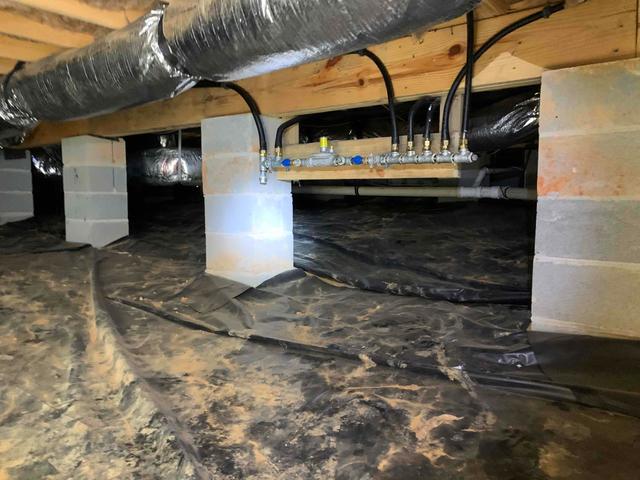
Unsealed Vapor Barrier
At new construction, a 6 mil vapor barrier is required to cover the ground. However it is not required to have the seams sealed or be sealed to the wall or piers. This means the liner can easily be displaced, ripped and torn by service persons and critters. Since it is unsealed and easily damaged, the 6 mil allows moisture and vapor into the crawl space instead of keeping it out.
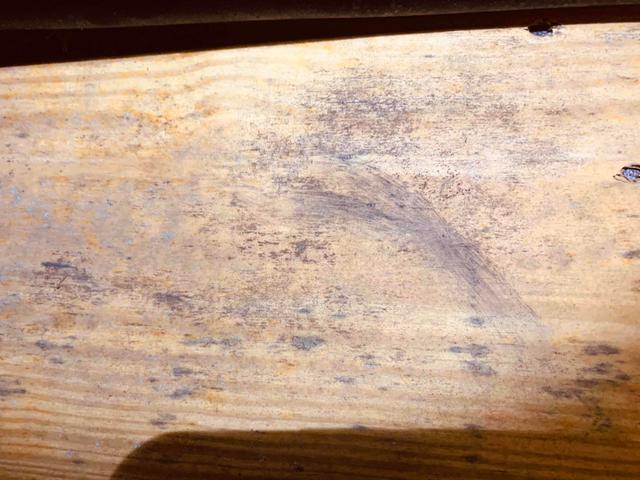
Mildew / Mold growth on floor joists
Mildew / Mold needs three things to grow; warm temperatures, high relative humidity (over 60%), and organic material such as the wood joists in your crawl space or the paper backing on fiberglass insulation. Since our climate is warm and humid for most of the year, there is plenty of opportunity for mildew growth to occur.

Deteriorating Fiberglass Insulation
As moisture enters the crawl space, fiberglass insulation soaks it up like a sponge. It holds the water against the joists and the rods used to hold it up. Over time, the moisture in the material rusts the rods keeping it in place, it begins to separate from itself, and with the help of gravity, falls to the ground.
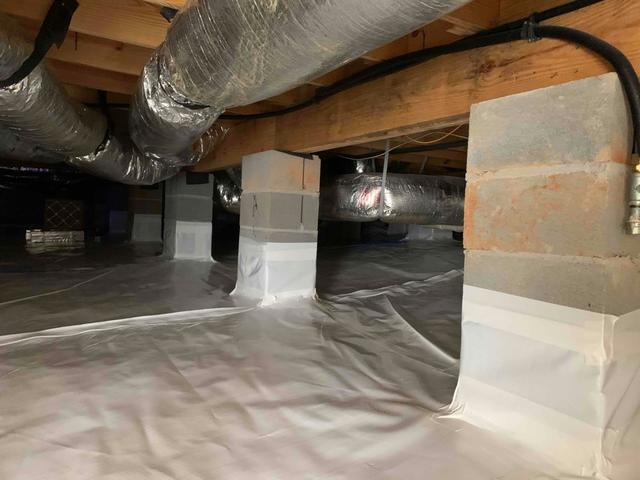
Heavy-duty Vapor Barrier in Crawl Space
The CleanSpace Vapor Barrier is a heavy-duty 7 layer, poly reinforced liner with an antimicrobial, UltraFresh, Built in. CleanSpace is installed on the crawl space floor, with seams overlapped and sealed, it is run up the walls 6-8 inches above outside grade and sealed to the walls, and wrapped around all piers and sealed. The CleanSpace system seals your crawl space off from the earth's moisture.
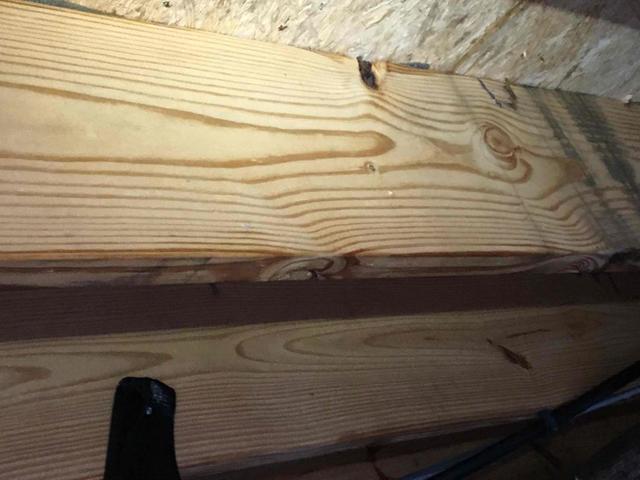
Joists treated with Antimicrobial
Joists are treated with an antimicrobial called Shockwave that kills the microbial growth.
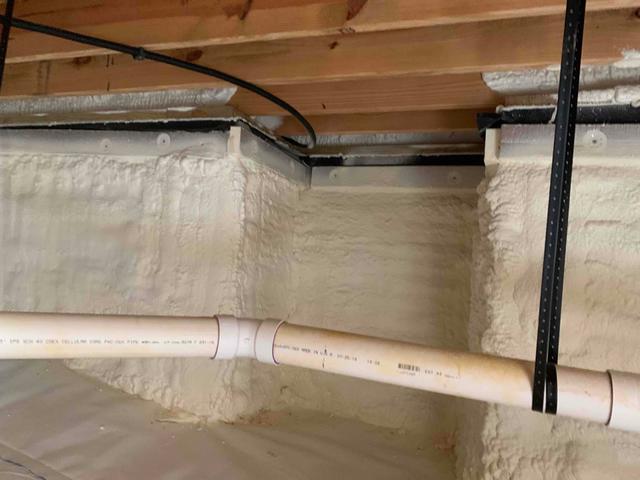
Insulated Foundation Walls
Closed Cell Spray Foam insulation is applied to the crawl space walls. A 2 inch viewing strip is left at the top of the foundation wall, per VA building code, for termite inspection.
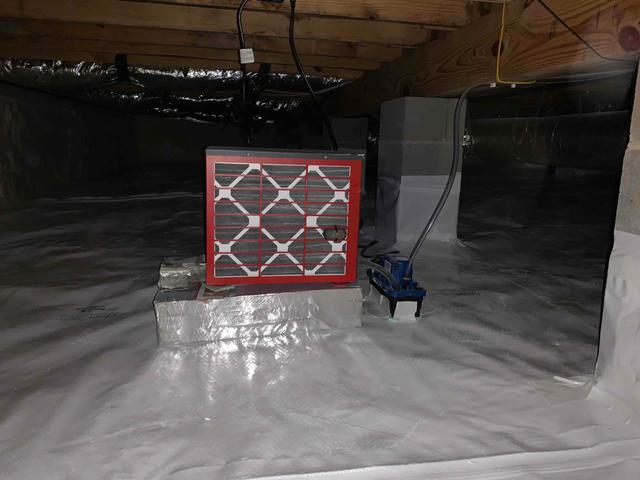
Controlling Relative Humidity
The SaniDry Sedona Dehumidification System is the last piece of the encapsulation. We have sealed the crawl space from as much outside air and moisture as possible, however we need to control the relative humidity in the space. The SaniDry Sedona does this by turning on when the relative humidity increases, it pulls moisture from the air and circulates the dried air to keep the crawl space dry.


